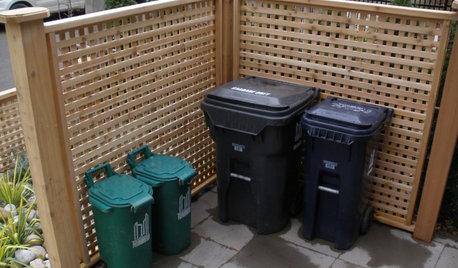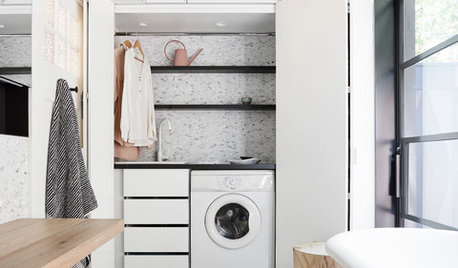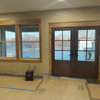Can I peel the stickers off the windows now????
rookie_2010
13 years ago
Featured Answer
Comments (14)
sue36
13 years agorookie_2010
13 years agoRelated Professionals
Anchorage Architects & Building Designers · Morganton Architects & Building Designers · Nanticoke Architects & Building Designers · Farmington Home Builders · Griffith Home Builders · Riverton Home Builders · South Sioux City Home Builders · Everett General Contractors · Gary General Contractors · Hutchinson General Contractors · Lincoln General Contractors · Norman General Contractors · Norristown General Contractors · Stillwater General Contractors · Wallington General Contractorsmacv
13 years agoenergy_rater_la
13 years agorookie_2010
13 years agosue36
13 years agorookie_2010
13 years agomacv
13 years agokudzu9
13 years agochris8796
13 years agomacv
13 years agoenergy_rater_la
13 years agomanhattan42
13 years ago
Related Stories

THE POLITE HOUSEThe Polite House: What Can I Do About My Neighbors’ Trash Cans?
If you’re tired of staring at unsightly garbage way before pickup day, it’s time to have some tough conversations
Full Story
LAUNDRY ROOMSWhere Can I Hide My Laundry Area?
It’s a case of now you see it, now you don’t with these 10 clever ways of fitting in a laundry zone
Full Story
LATEST NEWS FOR PROFESSIONALSDesigning a Business: How Do I Deal With Client Sticker Shock?
Design business coach Chelsea Coryell offers tips for helping clients understand the actual costs of their projects
Full Story
KITCHEN DESIGNTrending Now: 25 Kitchen Photos Houzzers Can’t Get Enough Of
Use the kitchens that have been added to the most ideabooks in the last few months to inspire your dream project
Full Story
EVENTSLook What Tile Can Do Now: 9 Versatile New Finishes
See exciting new stoneware looks from Italy’s big ceramic tile and bath show
Full Story
THE POLITE HOUSEThe Polite House: Can I Put a Remodel Project on Our Wedding Registry?
Find out how to ask guests for less traditional wedding gifts
Full Story
REMODELING GUIDESAsk an Architect: How Can I Carve Out a New Room Without Adding On?
When it comes to creating extra room, a mezzanine or loft level can be your best friend
Full Story
LIFEThe Polite House: How Can I Tell a Construction Crew to Pipe Down?
If workers around your home are doing things that bother you, there’s a diplomatic way to approach them
Full Story
LATEST NEWS FOR PROFESSIONALS8 Things You Can Do Right Now to Strengthen Your Business
Learn online tools, keep in touch and invest in marketing now to sustain your firm during this uncertain time
Full Story
LIVING ROOMSIdeabook 911: How Can I Make My Living Room Seem Bigger?
10 Ways to Make a Small Space Live Large
Full StoryMore Discussions










manhattan42